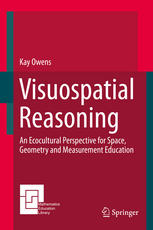

Most ebook files are in PDF format, so you can easily read them using various software such as Foxit Reader or directly on the Google Chrome browser.
Some ebook files are released by publishers in other formats such as .awz, .mobi, .epub, .fb2, etc. You may need to install specific software to read these formats on mobile/PC, such as Calibre.
Please read the tutorial at this link: https://ebookbell.com/faq
We offer FREE conversion to the popular formats you request; however, this may take some time. Therefore, right after payment, please email us, and we will try to provide the service as quickly as possible.
For some exceptional file formats or broken links (if any), please refrain from opening any disputes. Instead, email us first, and we will try to assist within a maximum of 6 hours.
EbookBell Team

5.0
58 reviewsThis book develops the theoretical perspective on visuospatial reasoning in ecocultural contexts, granting insights on how the language, gestures, and representations of different cultures reflect visuospatial reasoning in context.
For a number of years, two themes in the field of mathematics education have run parallel with each other with only a passing acquaintance. These two areas are the psychological perspective on visuospatial reasoning and ecocultural perspectives on mathematics education. This volume examines both areas of research and explores the intersection of these powerful ideas.
In addition, there has been a growing interest in sociocultural aspects of education and in particular that of Indigenous education in the field of mathematics education. There has not, however, been a sound analysis of how environmental and cultural contexts impact visuospatial reasoning, although it was noted as far back as the 1980s when Alan Bishop developed his duality of visual processing and interpreting visual information. This book provides this analysis and in so doing not only articulates new and worthwhile lines of research, but also uncovers and makes real a variety of useful professional approaches in teaching school mathematics. With a renewed interest in visuospatial reasoning in the mathematics education community, this volume is extremely timely and adds significantly to current literature on the topic.